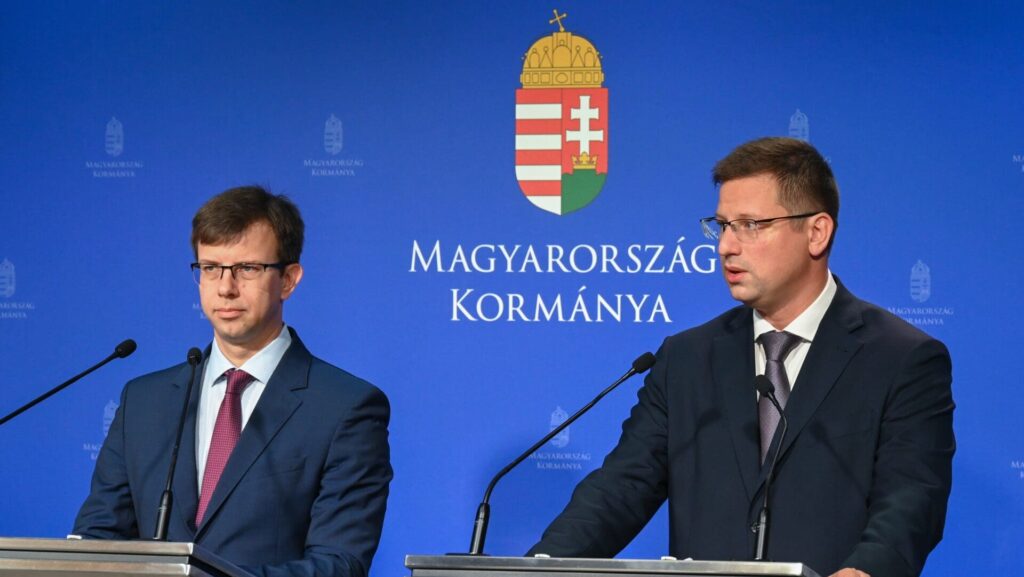As we wrote in our previous article, over the last couple of years Hungary had made a considerable improvement towards becoming a greener economy. While in our previous article we assessed recycling, selective waste collection and the usage of renewable energy in Hungary, in this article we write about the health of Hungarian nature. More specifically, the health and cleanness of Hungarian lands, water and air.
The majority, 60 per cent of Hungarian lands are used for agricultural purposes – in Europe the proportion of cultivated lands is higher only in Denmark. Since 2010 the size of agricultural land, which is farmed organically has increased significantly in the country. In 2017, 199 thousand hectares, that is 55 per cent more land was farmed in an environmentally friendly way than in 2010. However, despite the significant increase in organic farming, Hungary is still behind the EU average on this metric. Of all the Hungarian agricultural lands 3.7 per cent is organically farmed, while the EU-28 average is 7 per cent. In the EU, Malta has the lowest proportion of organic farming (only 0.4 per cent of domestic lands), on the other hand, Austria (23.4 per cent) and Estonia (19.6 per cent) have the highest proportion of agricultural land used in an environmentally friendly way.[1]
Since the early 2000s, territories covered by forests grew by an annual average growth rate of 8.5 thousand hectares
Half of the Hungarian lands not used by agriculture are covered with forests. The area covered with forests has substantially increased in Hungary over the last couple of decades. Since the early 2000s, territories covered by forests grew by an annual average growth rate of 8.5 thousand hectares, that is to say, over the last twenty years Hungarians forests areas grew by 8.5 per cent in their size. As a result, by 2017, 20.9 per cent of Hungary’s territory was covered with forests. Hungary’s goal is to increase forests even more; by 2050, Hungary aims to have 27 per cent of its territory covered with forests.[2]Since the early 2000s, more trees are being planted in Hungary than cut down; therefore, the country is successfully aiming towards achieving its forest-related goals. On the other hand—unfortunately—since 2012, the health of Hungarian forests has been on the decline – the proportion of strongly damaged forests has increased to 8.8 per cent in 2018 from 2.5 per cent in 2012. In 2018 only 26.5 per cent of Hungarian forests were considered to be ‘healthy’, other forests suffered from slight to severe premature leaf drop. In short, while the tendency of forestation in Hungary is favourable, this trend should be accompanied with more awareness about the health of forests.
Beyond the health of forests, clean water is also a fundamental element of a healthy nature. However, as rivers usually run through multiple countries, the freshness of waters can be ensured only through international cooperation. In Hungary, for instance, 90 per cent of surface water arrives to the country through a neighbouring state – so, to a large extent the quality of these waters is beyond Hungary’s control. According to a 2015 ecological classification of Hungarian surface waters, only 6 per cent of watercourses in the country are in an excellent or good condition, relative to their length. This data suggests that most of the watercourses that enter Hungary through another country are already damaged. On the other hand, the study found that 72 per cent of Hungarian lakes and ponds have a good or excellent status. [3] It is good news because the cleanness of these lakes and ponds is fully within Hungary’s ability to control and the majority of them are indeed in a good condition.
Finally, the air. In terms of per capita greenhouse gas emission, Germany is responsible for more than one fifth of EU emissions. While in Germany, the largest emitter, 11.4 tons /capita greenhouse gases are emitted, in Hungary the per capita emission is only half of the German figure – 6.3 tonnes. Hungarian greenhouse gas emission is also below the EU-28 average which is 8.7 tonnes / capita.[4] In 2016 the Hungary economy was responsible for 69 per cent of all the greenhouse gas emission, while households emitted the remaining proportion of pollution.
Emissions decreased by 32 per cent by 2018 compared to the 1990 levels
The EU target is to reduce the 1990 level greenhouse gas emissions by at least 20 per cent by 2020, and by at least 40 per cent by 2030 – the final aim is to achieve carbon neutrality by 2050. Between 2000 and 2018, Hungary’s per capita greenhouse gas emissions were consistently below the EU-28 average, in 2018 it was only 77 per cent of the EU average. In Hungary, emissions decreased by 32 per cent by 2018 compared to the 1990 levels, which is more favourable than the EU-28 average (–23 per cent). Among the Visegrád Four countries, Poland was able to reduce its emissions the least (–13 per cent) while the Czech Republic (–35 per cent) and Slovakia (–41per cent) the most. Among the neighbouring countries, Austria has the worst emission value (2.7 per cent more than in 1990) while Romania is the best (–53 per cent).[5]
[1] Aujeszky Pál, Árva Katalin, Bárdos Csilla, Dienes-Borbély Nóra, Dr. Fekete-Fábián Zsófia, Franczen Lajos, Halmi Erzsébet, Patay Ágnes, Polgár Ágnes, Szabó Zsuzsanna, Temesvári Tímea, Végh Nándor, Zách Dániel, ’Környezeti helyzetkép, 2018’, KSH, (2018), 46.
[2] Aujeszky Pál, Árva Katalin, Bárdos Csilla, Dienes-Borbély Nóra, Dr. Fekete-Fábián Zsófia, Franczen Lajos, Halmi Erzsébet, Patay Ágnes, Polgár Ágnes, Szabó Zsuzsanna, Temesvári Tímea, Végh Nándor, Zách Dániel, ’Környezeti helyzetkép, 2018’, KSH, (2018), 73.
[3] Aujeszky Pál, Árva Katalin, Bárdos Csilla, Dienes-Borbély Nóra, Dr. Fekete-Fábián Zsófia, Franczen Lajos, Halmi Erzsébet, Patay Ágnes, Polgár Ágnes, Szabó Zsuzsanna, Temesvári Tímea, Végh Nándor, Zách Dániel, ’Környezeti helyzetkép, 2018’, KSH, (2018), 8.
[4] Aujeszky Pál, Árva Katalin, Bárdos Csilla, Dienes-Borbély Nóra, Dr. Fekete-Fábián Zsófia, Franczen Lajos, Halmi Erzsébet, Patay Ágnes, Polgár Ágnes, Szabó Zsuzsanna, Temesvári Tímea, Végh Nándor, Zách Dániel, ’Környezeti helyzetkép, 2018’, KSH, (2018), 8.
[5] ’Az üvegházhatású gázok kibocsátása’, KSH, (2020), https://www.ksh.hu/sdg/3-1-sdg-11.html, accessed 10.05.2022









